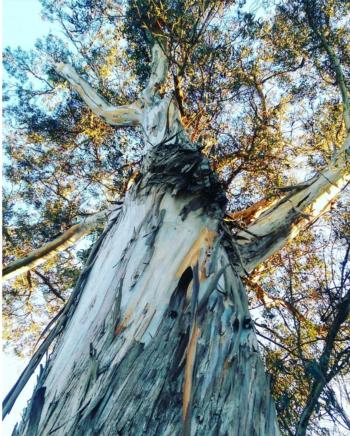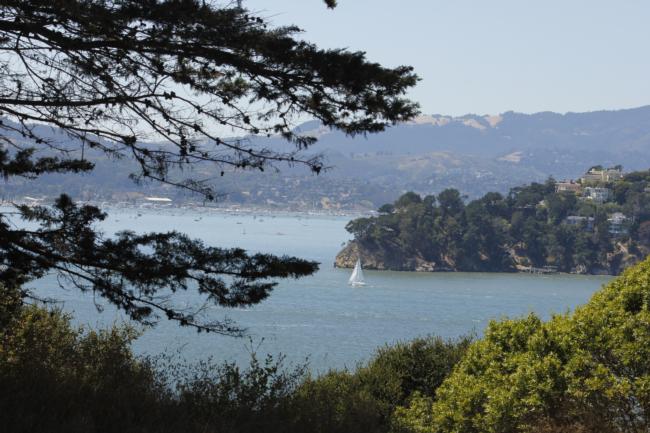
Introduction
Background
What are mature and historic trees?
Definition - Mature and historic tree stands are identified and evaluated based on a combination of characteristics including their size, age, species, ecological value, aesthetics, location, and historical significance (Swiecki and Bernhardt, 2001). A broad definition identifies historic and mature trees as groups of trees that are generally dominated by individuals older than 50 years that have a notably even-aged structure, and share all of the management challenges common to other urban trees (San Francisco Urban Forestry Council, 2015; NPS Park Cultural Landscapes Program - Preserving Heritage Trees). Most historic and mature stands are composed of Eucalypts (such as Eucalyptus globulus), Monterey pines (Pinus radiata), Monterey cypresses (Cupressus macrocarpa), and California Sycamore (Platanus racemosa) in their latter part of their lifespan.
Importance

Optimizing the health of historic and mature trees not only maintains their visual and historic value and aesthetics, but also can lead to a suite of environmental, social, and economic benefits. Historic and mature tree stands play essential ecosystem roles, and have important functional values (San Francisco Urban Forestry Council, 2015). Healthy tree stands can help reduce air pollution, sequester carbon, stabilize the soil, and provide essential wildlife habitat. Mature and historic trees in the urban setting not only shape the spatial arrangement and the aesthetics of a neighborhood, but also contribute to human well-being, and can lead to increased productivity, and higher property values (San Francisco Urban Forestry Council, 2015).
It is widely recognized that the loss of mature trees can significantly change a historic landscape (National Park Services, 2010). Aging trees are perceived as much more than habitat for wildlife, they are seen as cultural artifacts from a place with a long human history (Bastin, 2014). Therefore, public land managers should be equipped with the knowledge and resources needed to effectively manage urban forests, maintaining their recreational and historical values, while also ensuring protection to endangered species, maintaining migratory and nesting bird habitat, and preserving the biodiversity of the region (San Francisco Urban Forestry Council, 2015). Consequently, understanding and promoting proper tree care is an essential step in ensuring that historic trees grow to their full potential (San Francisco Urban Forestry Council, 2015). Proper management of these unique resources can play a fundamental role for public safety, while preserving the historic characteristics, and cultural heritage of an urban metropole.
Problem
It is widely recognized that maintaining a mosaic of tree species, plant communities and tree ages across the landscape will result in a healthy ecosystem resilient to insect infestations and diseases, an ecosystem that can provide an array of irreplaceable socio-economic benefits (San Francisco Urban Forestry Council, 2015). Management of these stands should be done with care, and based on a thorough understanding of both their ecological and cultural functions. Yet, dealing with mature and historic trees often gives rise to an unique set of challenges resulted from their susceptibility to diseases, irreversible decline in health due to age, and potential structural instability (posing safety hazards due to falling branches, increased fire risk, damage to buildings, and erosion) (San Francisco Urban Forestry Council, 2015). In addition to this, when developing management strategies for mature trees in the urban setting, or at the wildland-urban interface (WUI), one needs to consider not only tree related factors but also human centric factors (such as historical significance, cultural value, and human safety). In some instances removal of mature stands is necessary, and should be done following a thorough site examination, and following the development of a comprehensive environmental impact assessment.

Past and current efforts
A number of different efforts have been dedicated towards designing principles to study and manage historic tree stands. Websites such as: Historic Tree Care, Mature Tree Care part of the Sacramento Tree Foundation, and workshops such as the Historic Tree Preservation Workshop (2010), the Ottawa Heritage Tree Workshop (2012) are all resources that disseminate key information related to preserving and maintaining mature, historic trees.
A Canadian based program, the Ontario Forest organization conducted the Ottawa Heritage Tree Workshop in 2012 developed guidelines to identify and assess heritage trees based on their age, size, appearance, and their cultural and historical significance (Ottawa Heritage Tree Workshop, 2012). The program views heritage trees not only as a wildlife habitat, but also as a valuable source of genetic material (Ottawa Heritage Tree Workshop, 2012).
Among the most recent efforts, the Recommended Guidelines for Managing Mature and Historic Tree Stands (2015) drafted for the San Francisco Urban Forestry Council provides a comprehensive overview of the importance of managing iconic tree stands, and highlights the numerous benefits that stem from proper urban forest management strategies.
A joint collaboration between the Nation Park Service and the US. Department of the Interior, the NPS Park Cultural Landscapes Program is yet another program focused on preserving and managing cultural landscapes, including preserving heritage trees. Cultural landscapes are defined as either rural tracts of land, or historic buildings and districts that reflect the country’s origins and development (National Park Service, Technical Preservation Services). The Program recognizes that vegetation such as mature, native trees, has important historic characteristics. These elements are viewed as critical components of the landscape which shape the spatial arrangement, land use, and visual appeal of a place. This program offers a suite of resources, educational and training programs aimed to help individuals better understand, appreciate, and manage unique cultural landscapes.
